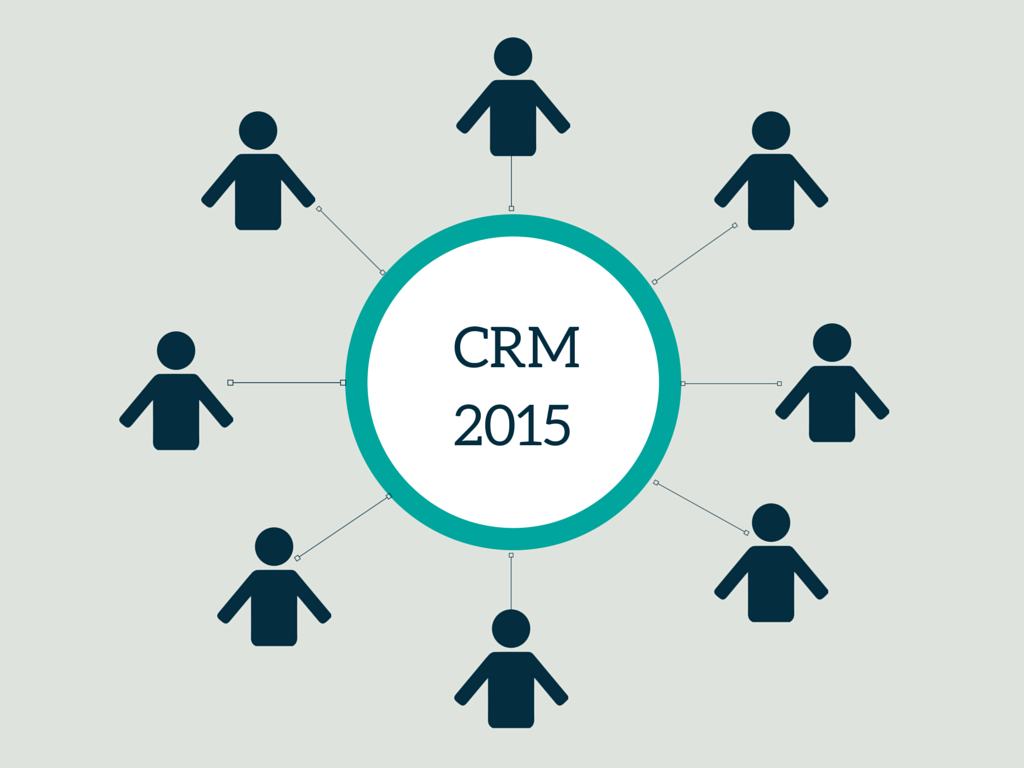CRM: Trends in 2015
 It is an undeniable fact that, following a slow uptake of CRM (Customer Relationship Management) solutions and platforms, this process has now reached a reasonable cruising speed.
It is an undeniable fact that, following a slow uptake of CRM (Customer Relationship Management) solutions and platforms, this process has now reached a reasonable cruising speed.
Both the leading manufacturers in the sector for said solutions and the main analysts are optimistic in terms of growth for the CRM industry, as well as its positioning and penetration in both large companies and SMEs.
The most significant trends for the coming months are as follows (they include a number of new variations on old themes):
-
Customer-focused organisations
An entirely customer-focused approach is nothing new. For some years, manufacturers have been promising a 360º view of the customer base that has been hard to achieve until now. The legendary 360º view has reappeared.
What is different about this “new” 360º view?
Business leaders have realised that there is not only one system – CRM or not – to deliver this view in an isolated fashion.
From our point of view, the support for analysis and Business Intelligence platforms, marketing automation tools, Social Marketing, more efficient communication infrastructures, etc. all form part of a genuine 360º solution rather than an ambition, which used to be the case until now.
The focus varies according to market conditions. In recessive markets, such as the market in Spain with an economic crisis in recent years, those companies that commit to implementing a customer management system (except those that are doing so in growing markets) look forward to being able to properly manage their commercial costs and streamline their sales resources, as well as the loyalty of their installed customer base. Whereas, in expansive markets, such as the market starting to emerge in Spain, the focus switches more strongly to attracting new customers and opening new sales channels together with better commercial resource management. Finally, online sales and Internet presence will play a highly significant role in the coming years.
-
Business Intelligence. Democratisation of Business Intelligence
Business intelligence is being implemented in more and more customer applications. Regardless of the industry or sector in question, there will be an increasing use of integrated business intelligence (BI) stemming from a need to home in on customer needs.
According to Forrester Research, and following years of discussion and gradual adoption in the corporate world, the CRM market and its Software as a Service (SaaS) model solutions is growing like never before.
Ultimately, if organisations wish to remain relevant to their customers, they need to be capable of detecting and adapting to changes in their customers’ world before their competitors do. CRM and CEM (Customer Experience Management) will play a vital role in this, but successful companies will be completely connected from the front office to the back office, and from the customer office to their suppliers and partners.
A customer-focused company works on constant innovation, creation and delivering value; something that goes beyond CEM (Customer Experience Management). The 360º approach not only shows customer contacts but also the context and the forces that surround and comprise that context.
-
Organisation. Globality
The new worldwide trends towards globalisation are forcing major changes to be made in terms of how companies organise themselves. These changes are generally linked to how they integrate into the local, national and international environment. Companies that fail to accept this new status quo will be condemned to the side-lines, separated from the new type of economic organisation that currently operates in the global markets.
Customer service solutions will become the optimisation of work effort aimed at guaranteeing optimal work flow management.
-
Omni-channel Strategies
Omni-channel strategies are a trend in the retail industry that is defined as a series of integrated processes that provide a unified outlook and experience of brands during the life-cycle of relations regardless of the channel through which interaction takes place. Omni-channel strategies can be defined as a synchronised operation model in which all channels of the company are aligned and present a single face to the customer, together with a coherent way of doing business.
The omni-channel experience allows customers to access any information or products available to them regardless of where they access it from or the device used to do so.
We are also starting to feel the emergence of the Internet of Things as a new trend that will open up numerous business opportunities.
-
Connected Devices
Estimates suggest that the number of connected devices in 2020 will reach 50 trillion. If this is the case, we need to foresee which connected device-related insights (Internet of Things) will reach CRM in order to offer a customised commitment delivered in context, thereby enabling better planning and anticipation of the needs of future customers, proactivity, cost reduction and consumer satisfaction.
-
Relevant Experiences
It will be possible to use insights taken from customers and interaction with data captured by the CRM to offer relevant experiences to consumers during the entire relationship cycle. We must think that companies will use CRM insights to attract more lucrative consumers and reduce acquisition costs during the early stages of the relationship, among other things.
About Intelligence Partner: Intelligence Partner is a Spanish consultancy firm specialised in “cloud-based” solutions that provides the market with consultancy services, as well as the development and implementation of various technology platforms and solutions.
Together with the main providers of cloud-based solutions (Google, Salesforce, Sugar CRM, Tableau, etc.), Intelligence Partner offers specific technology for different business areas: Communication and Collaboration, CRM, BPM, BI, etc. Through its offices in London, Spain and Brazil, Intelligence Partner offers extensive coverage to both the European and Latin American markets.


